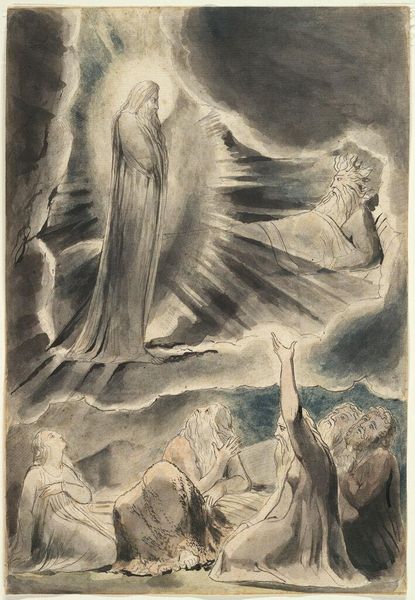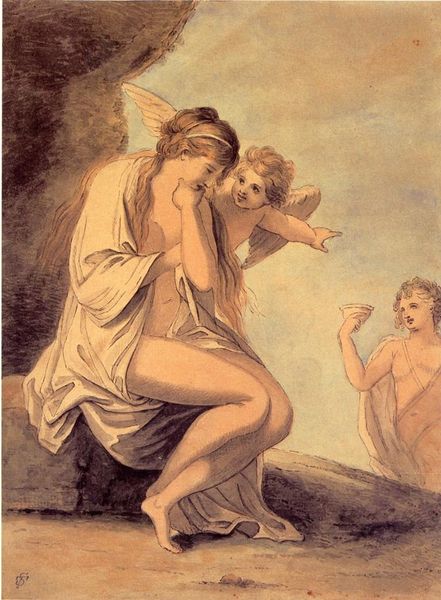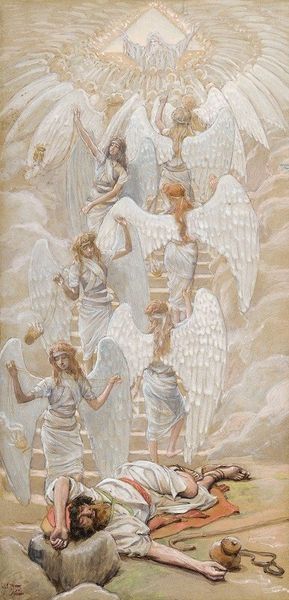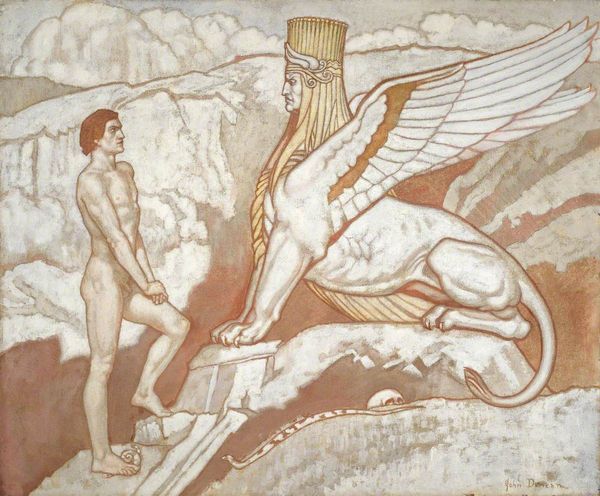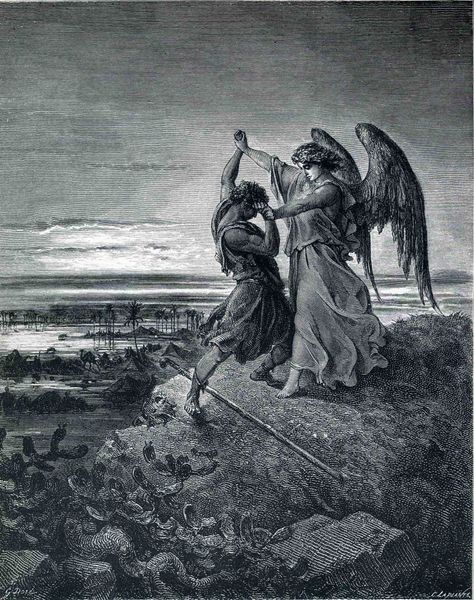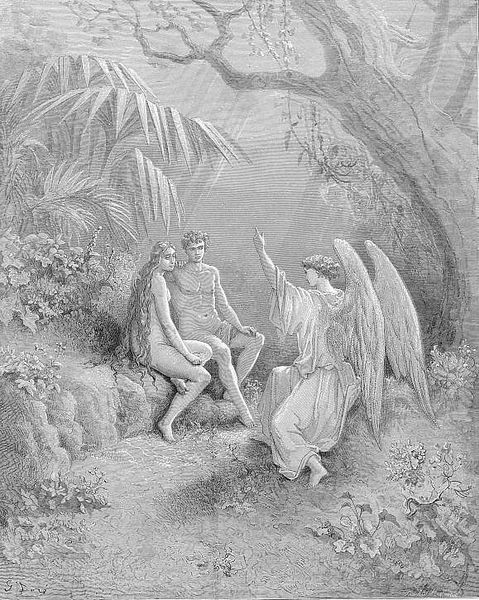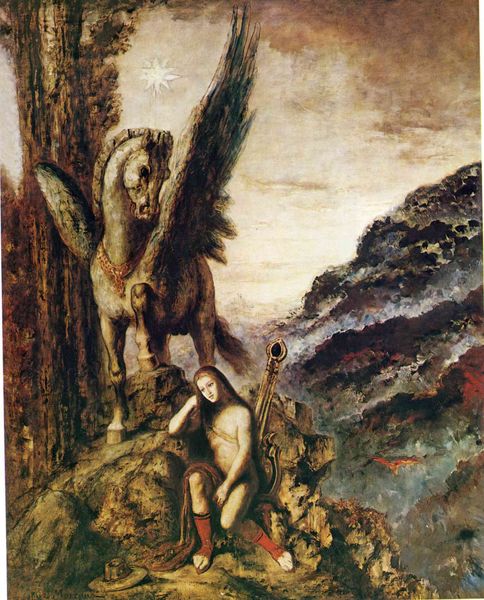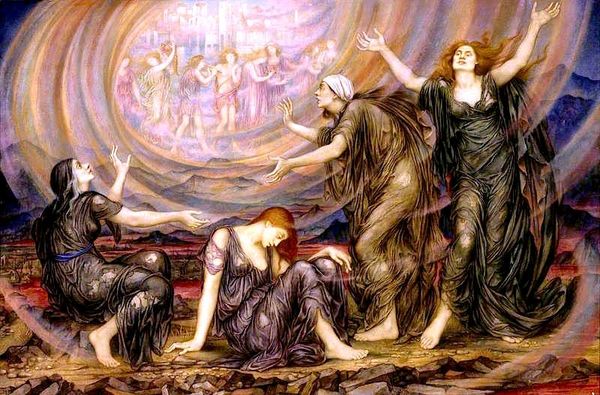
gouache
gouache
gouache
landscape
figuration
oil painting
mythology
history-painting
watercolor
Copyright: Public domain
In this depiction of “Adam and Eve Driven from Paradise,” James Tissot renders the moment of humanity’s expulsion with striking angelic figures. These aren’t the cherubic angels of Renaissance art; they stand armed with swords, their wings spread wide, acting as enforcers of divine decree. Consider the angel pointing; a gesture laden with command and finality. We see echoes of this directive pose throughout art history – a Roman emperor signaling victory, or a saint indicating the path to salvation. It’s a posture deeply embedded in our collective memory, signifying authority and the imposition of will. The sword, too, is not merely a weapon, but a symbol of justice and divine power. From the flaming sword guarding Eden to the archangel Michael’s blade, it represents the razor's edge between right and wrong, and the painful consequences of transgression. The expressions on Adam and Eve’s faces resonate with primal emotions: shame, fear, and loss. These feelings are not unique to them, but mirror our own anxieties about mortality, guilt, and the unknown future. Tissot taps into these subconscious fears, creating a powerful scene that transcends its biblical context. We are left to ponder the cyclical nature of transgression and redemption, played out across the vast stage of human history.
Comments
No comments
Be the first to comment and join the conversation on the ultimate creative platform.



